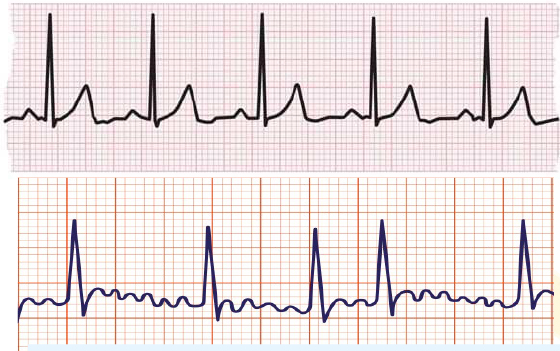 An “arrhythmia” is an irregular heartbeat. It indicates that the electrical signals that tell the heart to beat may not be working properly. The pattern of the heartbeat is irregular or inconsistent or may beat too fast or too slow.
An “arrhythmia” is an irregular heartbeat. It indicates that the electrical signals that tell the heart to beat may not be working properly. The pattern of the heartbeat is irregular or inconsistent or may beat too fast or too slow.
While it is normal for the heart to beat faster during exercise and slower when a person is sleeping, if this happens at other times it may be because of a heart condition.
An arrhythmia can feel like a fluttering or racing heartbeat (palpitations). It may be harmless or may indicate a more serious heart condition. Many arrhythmias may not have accompanying symptoms.
One example of a common arrhythmia is atrial fibrillation (irregular and often very rapid heart rhythm). This is linked to a higher risk of stroke (loss of blood flow to part of the brain) and dementia (loss of the ability to think, remember or reason which interferes with a person’s daily life and activities).
Arrhythmias can be detected by an electrocardiogram (ECG), which is an electrical recording of the heart rhythm.
The HCHS/SOL study performed ECGs during the first in person visit for all participants. We found that the prevalence of atrial fibrillation was about 1% among our participants.
Since arrhythmias can come and go, the heart rhythm may need to be monitored by wearing a small portable ECG recording device for 24 hours or longer. Many patients become aware of arrhythmias only after they have worn an ECG recording device over a period of days or weeks.
The SOL-Rhythm study is enrolling participants to wear an ECG recording device for 14-days to be able to detect any abnormal heart rhythm, if present. The device adheres to the upper left chest. The knowledge gained will help us understand how abnormal heart rhythm relates to other kinds of heart disease, stroke, and dementia.
